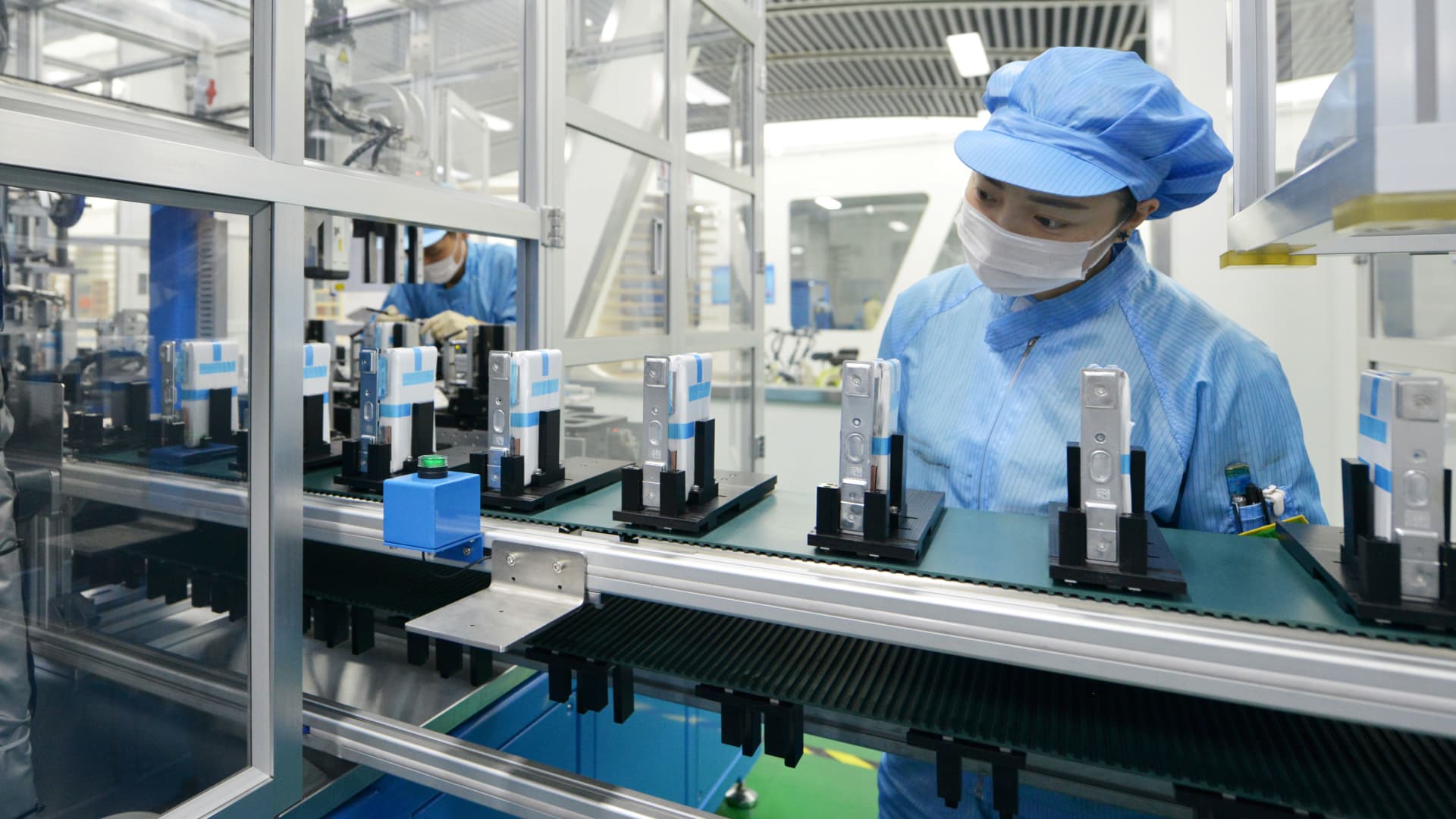Solid-State Battery Race Just Got Hotter With New VinFast-ProLogium Mashup

Not too long ago, solid-state battery technology was lingering in the lab like a lonely ghost, waiting to fulfill its promise of improved safety, range, durability, and recyclability compared to conventional lithium-ion EV batteries. Now the waiting is over. The Vietnamese electric vehicle startup VinFast is the latest automaker to climb on board the solid-state bandwagon, with big plans to shunt a pipeline of high performance EVs into the global market through a newly announced strategic partnership with the battery maker ProLogium.
The Solid-State Battery Revolution Is (Finally) Here
To be clear, EV buyers will have to wait until 2024 to get their hands on a next-generation VinFast EV. The ink has barely dried on a memorandum of understanding signed by the two companies last week, following an investment in Prologium by Vinfast of a significant but undisclosed sum.
“Under the strategic cooperation arrangements, ProLogium plans to provide solid-state battery cells to VinFast starting from 2024 to support its next generation line-up. ProLogium’s first major solid-state battery plant, which is slated to launch in early 2023, will devote a significant portion of the facility’s production capacity to supply VinFast,” Vinfast explains.
“In the future, ProLogium and VinFast may also establish a joint-venture solid-state battery factory in Vietnam,” they add.
As for why wait for a solid-state battery, there’s no reason to wait. With gas prices high, electric vehicles with conventional Li-ion batteries are looking mighty attractive these days.
The idea would be to get your EV now, and by the time you’ve put two or three years worth of mileage on the vehicle, the battery will still be in good shape for the used car market, where someone else is sure to snap it up. By 2024 or thereabouts you can go off to the local VinFast dealer and get your hands on a new EV with a new solid-state battery.
“Solid-state batteries are among the most promising technologies to offer advantages in terms of safety, energy density, hyper fast-charging capability, recyclability, weight optimization, costs, and lifetime,” VinFast enthuses.
What Is VinFast?
VinFast is not exactly a household name over here in the US, but it will be soon, if all goes according to plan. It crossed the CleanTechnica radar back in 2020, when the company recruited the iconic automotive engineering and design firm Pininfarina to style its look.
The company was already eyeballing long range at an affordable price, anticipating 310 miles or about 10 days’ worth of driving for the average US driver (check out our VinFast archive for more news).
If that sounds rather ambitious, it is. However, VinFast did not pop up out of nowhere. Here, let’s have parent company Vingroup JSC, explain it.
“Vingroup, formerly known as Technocom Corporation, was founded in 1993 in Ukraine. In the early 2000s, Vingroup started in Vietnam with two key brands: Vincom and Vinpearl. In January 2012, Vinpearl JSC merged with Vincom JSC to form Vingroup Joint Stock Company.
As a multi-sector corporation, Vingroup focuses on three core pillars:
– Technology & Industry
– Trade & Services
– Social Enterprise
…Vingroup has created a respected, well-recognized Vietnamese brand and is proud to be one of the nation’s leading private enterprises.”
“Selling electric vehicles in the US is the name of the game,” we noted back in 2020, following up on a Bloomberg article from December 2019. The article described Vingroup’s Pham Nhat Vuong as “the Southeast Asian country’s richest man,” who is “so intent on exporting electric vehicles to the lucrative American market in 2021 that he’s plowing as much as $2 billion of his own fortune to reach that goal.”
For the record, the hands-on steering of the company is in the hands of Ms. Le Thi Thu Thuy, Vingroup Vice Chairwoman and VinFast Global CEO, who made it clar that VinFast intends to “quickly master the supply of solid-state batteries while continuing to deliver EV products with advanced battery technology.”
US Automakers & The Solid-State Battery Of The Future
Not to be caught napping, the Big Three US automakers have been eyeballing solid-state battery technology as well. General Motors, for example, included room for the solid-state battery firm POSCO when it announced strategic suppliers as part of a new $7 billion investment plan earlier this year.
Last year Ford also announced a strategic solid-state battery partnership with BMW, and Stellantis hooked up with Mercedes-Benz with an eye on the US energy storage startup Factorial Energy.
VinFast intends to be in the mix. A new factory in North Carolina is in the works, with plans for electric buses and other industries as well as battery-operated passenger cars.
Our friends over at Automotive News also scooped the news on VinFast’s dealership plans for the US last week. If you’re anywhere near the California cities of Santa Monica, San Diego, San Mateo, Corte Madera, Commerce, or Berkeley, keep an eye out for the first six locations, which should be up and running by the end of this year. Another two dozen locations are also slated, for a total of 30.
The EV Revolution Has Only Just Begun
As for why all the interest in solid-state battery tech all of a sudden, that’s easy. Conventional Li-ion technology is based on a liquid electrolyte, which requires an additional layer of engineering and design in order to run efficiently. For all the improvements in range and charging time since the early 2000s, the cost of an Li-ion battery is still the biggest hurdle between EVs and the mass market.
Replacing the liquid with a solid opens up new opportunities to simplify the battery system and harvest all the bennies that come with simplification, including longer range and faster charging times along with lower costs.
There being no such thing as a free lunch, solid-state battery tech is not free of kinks. However, scientists at the US Department of Energy’s Argonne National Laboratory are among those in hot pursuit of workarounds that bring the batteries to market, and they had this to say last February:
“…solid-state lithium-ion batteries, which consist of entirely solid components, have become increasingly attractive to scientists because they offer an enticing combination of higher safety and increased energy density — which is how much energy the battery can store for a given volume.”
Keep an eye on those Argonne scientists. They are leading an energy storage research team that has identified a next-generation solid electrolyte, which consists of lithium, scandium, indium, and chlorine.
“One chemical key to the ionic conductivity lay in the material’s crisscrossing 3D structure called a spinel,” the lab explains. “The researchers had to balance two competing desires — to load the spinel with as many charge carrying ions as possible, but also to leave sites open for the ions to move through.”
It could be a while before the Argonne solid-state battery gets out of the lab, but in the meantime there is plenty of solid-state action heading for the street. Keep an eye out for more solid-state energy storage news from other automakers, too.
Follow me on Twitter @TinaMCasey.
Photo: Solid state energy storage for EVs courtesy of ProLogium.
Appreciate CleanTechnica’s originality and cleantech news coverage? Consider becoming a CleanTechnica Member, Supporter, Technician, or Ambassador — or a patron on Patreon.
Advertisement
 This post has been syndicated from a third-party source. View the original article here.
This post has been syndicated from a third-party source. View the original article here.





